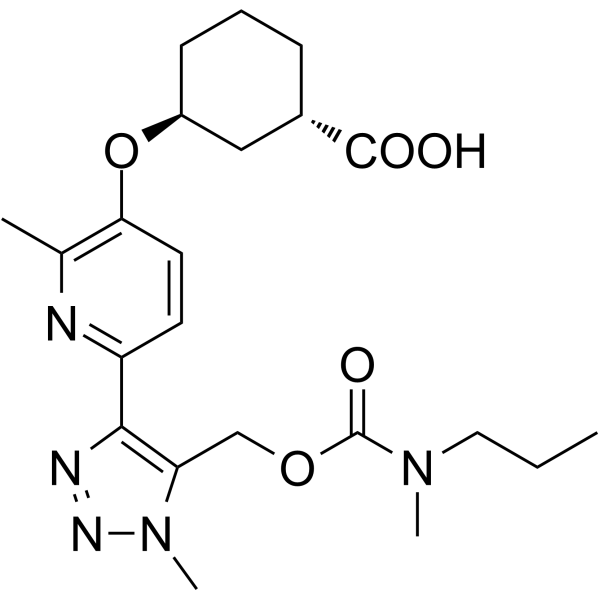BMS-986278 |
| Catalog No.GC63895 |
BMS-986278 is a potent lysophosphatidic acid receptor 1 (LPA1) antagonist, with a human LPA1 Kb of 6.9 nM.
Products are for research use only. Not for human use. We do not sell to patients.

Cas No.: 2170126-74-4
Sample solution is provided at 25 µL, 10mM.
BMS-986278 is a potent lysophosphatidic acid receptor 1 (LPA1) antagonist, with a human LPA1 Kb of 6.9 nM.
[1]. Cheng PTW, et al. Murphy BJ. Discovery of an Oxycyclohexyl Acid Lysophosphatidic Acid Receptor 1 (LPA1) Antagonist BMS-986278 for the Treatment of Pulmonary Fibrotic Diseases. J Med Chem. 2021 Nov 11;64(21):15549-15581.
Average Rating: 5 (Based on Reviews and 33 reference(s) in Google Scholar.)
GLPBIO products are for RESEARCH USE ONLY. Please make sure your review or question is research based.
Required fields are marked with *




















